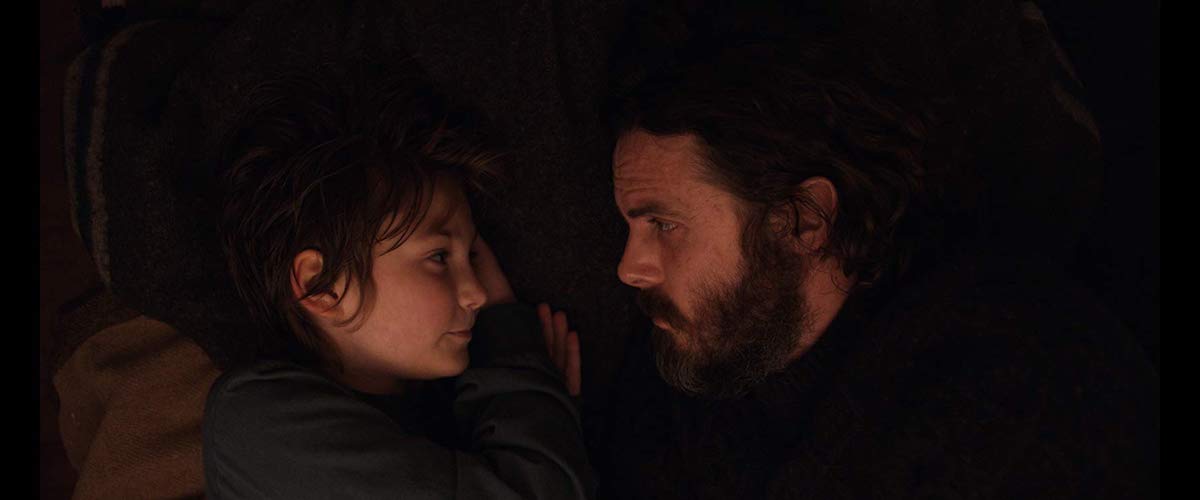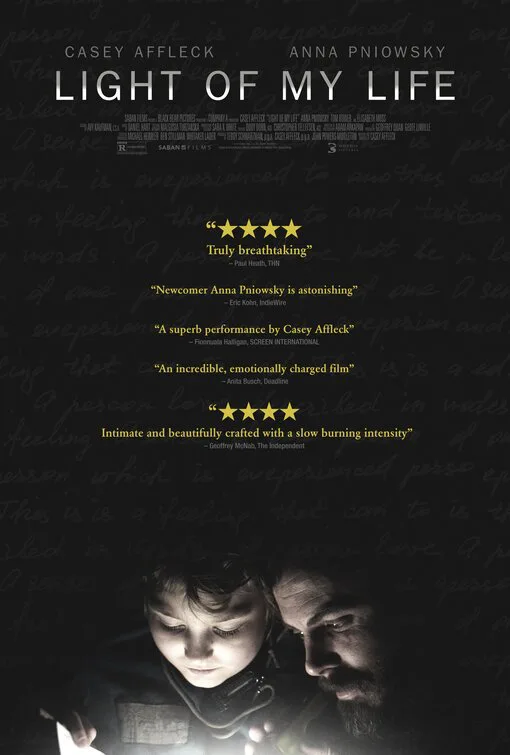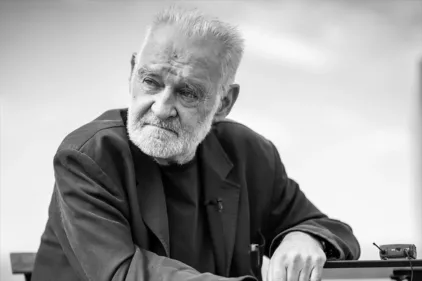In the lengthy opening scene of “Light of My Life,” Casey Affleck’s narrative directorial debut (which he also wrote), a father (Affleck) and his young daughter (Anna Pniowsky) lie in a tent at night, and he tells her a bedtime story. His daughter, nicknamed “Rag,” is on the cusp of adolescence but still enough of a little girl to enjoy being told a story. He makes up the story as he goes, prodding her into laughter with little asides that feel intimate and familiar. But the most revealing thing about this scene is the story he tells and how he tells it. He starts off by saying it will be a story about a “tough” female fox. The fox and her mate have this whole side adventure while boarding Noah’s Ark. As the story goes on, almost by stealth, the male fox’s shenanigans takes over the narrative. Rag notices, and calls him on it. You said this would be about the girl, why do you keep talking about the boy?
The scene is so gentle and unobtrusive that the point being made—which Affleck takes his time making—has even more bite. Men forget about women’s narratives. Half the time they don’t even know they’re doing it. Even when they supposedly centralize women, they’re still outside it, seeing things only through their point of view. It’s a very sharp critique. During this same scene, we get a glimpse of the larger context of their world. Rag asks him, “Am I the only girl of my species?” This is not some casual weekend camping trip.
“Light of My Life” is a post-apocalyptic story: a pandemic has wiped out the female population on the planet, including the unnamed father’s wife and Rag’s mother (Elisabeth Moss, seen in flashback). Now, father and daughter hide out in the woods. The world is now populated only by men, so the anomaly of Rag—apparently immune—is fraught with danger. Rag’s hair is shorn short, she wears caps and baggy track suits. Her body hasn’t begun to develop yet. She looks like a scrappy little boy. “Light of My Life” calls to mind other recent parent-child survival dramas like “Leave No Trace,” “The Road” or “A Quiet Place.” Father and daughter do “red flag” drills for what happens if danger finds them.
For long stretches of time, they are the only humans we see. The landscape is spookily deserted. Cinematographer Adam Arkapaw is attuned to the dramatic tension in nature, its fecundity but also its emptiness, the frightening exposure of fields. Arkapaw often films in long-shot, the two figures dwarfed by surroundings. The color palette is controlled, all greys, pale whites and browns. The trees, the bridges and lanes, vibrate with menace, in stark contrast to their beauty. Daniel Hart’s score is melancholy and ominous.
Affleck doesn’t rush. The pace sometimes drags, although I got drawn into the film’s slow patient build. In its leisurely mood, the sudden appearance of other humans—men approaching the house where they’re squatting, glimpsed as moving blurs through a window pane—is legitimately terrifying. Every so often the two walk into a nearby town, to pick up supplies at “federal dispensaries.” Men look at Rag once, and then look again, their eyes sharpening.
Rag was a baby when the plague came so this life is all she knows. She asks him what happened. He explains the world is “out of balance.” “When will it be balanced?” He replies, “When there are more women.” Considering the accusations towards Affleck about his behavior during the filming of “I'm Still Here,” the focus on a father determined to protect his daughter from men could be seen as “spin,” or a self-congratulatory placement of himself as Hero to Women. Affleck has said he wrote the script before the accusations. Whether or not this is true I don’t know. People write stories for all kinds of reasons, some of which are not even clear to them at the time. Whatever the case may be, it occurred to me that in this script Affleck was “working out” his thoughts on what men have done with the world and who they are (this includes himself), how their “anger” and “loneliness”—as the father calls it—manifest in monstrous ways. Girls, as always, are in the crosshairs.
Affleck’s acting style has always been understated to the point of barely existing. It’s why he was riveting in “The Assassination of Jesse James by the Coward Robert Ford,” in particular. Affleck drifts, he floats through dialogue, he doesn’t have words at his easy disposal. This works well for him here. There’s another scene in “Light of My Life” where he realizes he must prepare Rag for the onset of puberty. He hasn’t thought it out beforehand, although he stole a couple of books from an abandoned library, books with titles like Raising a Healthy Daughter. He launches into an incredibly awkward “birds and bees” talk, which actually turns out to be a good thing. Rag has heard of sex (he’s taken aback), but menstruation appears to be news to Rag, and she listens to him seriously, filing it away for later.
Reminiscent of the wonderful kid-tomboys who dominated movies in the 1970s, fierce kids like Tatum O'Neal, Kristy McNichol, Jodie Foster, Linda Manz, Anna Pniowsky projects a no-nonsense toughness and resilience. She looks at her father with trust, but also looks with a coolly assessing eye. She is a kid and also a world-weary veteran. Their dynamic together as actors is fluid and familiar. She is a child, but this is a two-hander.
As the situation grows more dangerous, the duo’s flight pattern gets desperate. The final sequences take place in a blinding white snowy landscape (calling to mind Robert Altman’s dystopian “Quintet“), and heave with increasing panic. “Chekhov’s gun” makes an early appearance, and the cliche of it is jarring, since Affleck has kept things on such a slow burn. The father’s devotion to Rag is touching. But in the final scenes, we realize that Affleck’s character—and Affleck himself as writer/director—have learned their lesson, prompted by the question Rag asks in the first scene.
“Light of My Life” is not the story of the male fox, after all. It’s been about the female fox all along.




















